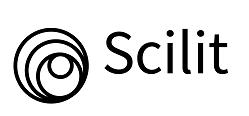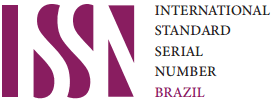Prevalence of eating disorders and body dysmorphic disorders in female adolescents: associated influencing factors and comparison between public and private school students
DOI:
https://doi.org/10.25118/2763-9037.2023.v13.1007Keywords:
Binge-eating disorder, Body Dysmorphic Disorders, Adolescent Psychiatry, Physical Appearance, Social NetworkingAbstract
Introduction: Eating disorders (ED) and body dysmorphic disorder (BDD) have a higher prevalence in females, and both disorders can be comorbid. Objective: To investigate the prevalence of ED and BDD in female high school students and the influence of parents, friends, and media, comparing students from public and private schools. Method: Analytical tools included a sociodemographic questionnaires, the Eating Attitudes Test, the Tripartite Influence Scale, and the Body Shape Questionnaire. Descriptive statistics, analysis of variance, and Pearson correlations were conducted to compare continuous variables. Results: Positive screening for ED was found in 17.5%, with media predominating among factors influencing body dissatisfaction. A positive correlation was observed between body dissatisfaction and ED screening. ED screening was higher in public schools, associated with the primary influence of media, while in private schools, friends were also a significant influence. Logistic regressions suggest that a higher BMI increases the likelihood of BDD and ED in public schools, but only BDD in private schools. Conclusion: Compared to literature reports, the prevalence of ED was higher, and that of BDD was similar, regardless of the type of school. Body dissatisfaction and ED mutually and positively influenced each other, while a higher BMI increased the likelihood of ED and BDD. Media was the most important influencing factor for body dissatisfaction and ED risk, although friends had a similar influence on private school students.
Downloads
Metrics
References
Silva ML, Taquette SR, Coutinho ES. Senses of body image in adolescents in elementary school. Rev Saude Publica. 2014;48(3):438-44. https://doi.org/10.1590/s0034-8910.2014048005083 PMID:25119938 - PMCID:PMC4203083
Cecon RS, Franceschini SDCC, Peluzio MDCG, Hermsdorff HHM, Priore SE. Overweight and body image perception in adolescents with triage of eating disorders. ScientificWorldJournal. 2017;2017:8257329. https://doi.org/10.1155/2017/8257329 PMID:28856236 - PMCID:PMC5569629
Sadock BJ, Sadock VA, Ruiz P. Compêndio de psiquiatria: ciência do comportamento e psiquiatria clínica. 11. ed. Porto Alegre: Artmed; 2016.
American Psychiatric Association. Manual diagnóstico e estatístico de transtornos mentais: DSM-5. 5. ed. Porto Alegre: Artmed; 2014.
Densham K, Webb HJ, Zimmer-Gembeck MJ, Nesdale D, Downey G. Early adolescents' body dysmorphic symptoms as compensatory responses to parental appearance messages and appearance-based rejection sensitivity. Body Image. 2017;23:162-70. https://doi.org/10.1016/j.bodyim.2017.09.005 PMID:29054091
Krebs G, Fernández de la Cruz L, Mataix-Cols D. Recent advances in understanding and managing body dysmorphic disorder. Evid Based Ment Health. 2017;20(3):71-5. https://doi.org/10.1136/eb-2017-102702 PMID:28729345 - PMCID:PMC5566091
Phillips KA. Suicidality in body dysmorphic disorder. Prim psychiatry. 2007;14(12):58-66. PMID:18449358 - PMCID:PMC2361388
Mitchison D, Crino R, Hay P. The presence, predictive utility, and clinical significance of body dysmorphic symptoms in women with eating disorders. J Eat Disord. 2013;1:20. https://doi.org/10.1186/2050-2974-1-20 PMID:24999401 - PMCID:PMC4081769
Rousseau A, Gamble H, Eggermont S. The role of appearance schematicity in the internalization of media appearance ideals: a panel study of preadolescents. J Adolesc. 2017;60:27-38. https://doi.org/10.1016/j.adolescence.2017.07.011 PMID:28750266
Micali N, De Stavola B, Ploubidis G, Simonoff E, Treasure J, Field AE. Adolescent eating disorder behaviours and cognitions: gender-specific effects of child, maternal and family risk factors. Br J Psychiatry. 2015;207(4):320-7. https://doi.org/10.1192/bjp.bp.114.152371 PMID:26206865 - PMCID:PMC4589663
Gorestein C, Wang YP, Hungerbuhler I, editores. Instrumentos de avaliação em saúde mental. Porto Alegre: Artmed; 2016.
Goss-Sampson M. Statistical analysis in JASP: a guide for students. 2nd ed. Amsterdam: University of Amsterdam; 2019. Disponível em: https://static.jasp-stats.org/Statistical%20Analysis%20in%20JASP%20-%20A%20Students%20Guide%20v0.10.2.pdf
Santos MM, Moura PS, Flauzino PA, Alvarenga MS, Arruda SPM, Carioca AAF. Comportamento alimentar e imagem corporal em universitários da área de saúde. J Bras Psquiatr. 2021;70(2):126-33. https://doi.org/10.1590/0047-2085000000308
Ribeiro PH, Reichert RA, Echeverria W, Silva R, Melão IP, Souza LS, Di Girolamo Martins G, De Micheli D. Insatisfação corporal: um estudo entre adolescentes brasileiros. Braz J Dev. 2022;8(2):10779-86. https://doi.org/10.34117/bjdv8n2-154
Uchôa FNM, Uchôa NM, Daniele TMDC, Lustosa RP, Garrido ND, Deana NF, Aranha ACM, Alves N. Influence of the mass media and body dissatisfaction on the risk in adolescents of developing eating disorders. Int J Environ Res Public Health. 2019;16(9):1508. https://doi.org/10.3390/ijerph16091508 PMID:31035441 - PMCID:PMC6540021
Javier SJ, Belgrave FZ. An examination of influences on body dissatisfaction among asian american college females: do family, media, or peers play a role? J Am Coll Health. 2015;63(8):579-83. https://doi.org/10.1080/07448481.2015.1031240 PMID:25825925
Wroblevski B, Lucas MS, Silva RMD, Cunha MSD. Relação entre insatisfação corporal e saúde mental dos adolescentes brasileiros: um estudo com representatividade nacional. Cien Saude Colet. 2022;27(8):3227-38. https://doi.org/10.1590/1413-81232022278.16302021 PMID:35894333
Miranda VPN, Morais NS, Faria ER, Amorim PRS, Marins JCB, Franceschini SCC, Teixeira PC, Priore SE. Insatisfação corporal, nível de atividade física e comportamento sedentário em adolescentes do sexo feminino. Rev Paul Pediatr. 2018;36(4):482-90. https://doi.org/10.1590/1984-0462/;2018;36;4;00005
McCabe MP, Ricciardelli LA. Sociocultural influences on body image and body changes among adolescent boys and girls. J Soc Psychol. 2003;143(1):5-26. https://doi.org/10.1080/00224540309598428 PMID:12617344
Lara CC, Francatto EM, Avíncola AS. Impacto das redes sociais sobre a insatisfação corporal em meninas adolescentes no ensino médio. Rev Educ Interdisciplin. 2022;11(2):32-47. https://seer.faccat.br/index.php/redin/article/view/2590
NCD Risk Factor Collaboration (NCD-RisC). Worldwide trends in body-mass index, underweight, overweight, and obesity from 1975 to 2016: a pooled analysis of 2416 population-based measurement studies in 128·9 million children, adolescents, and adults. Lancet. 2017;390(10113):2627-42. https://doi.org/10.1016/s0140-6736(17)32129-3 PMID:29029897 - PMCID:PMC5735219
Alves E, Vasconcelos FAG, Calvo MCM, Neves J. Prevalência de sintomas de anorexia nervosa e insatisfação com a imagem corporal em adolescentes do sexo feminino do município de Florianópolis, Santa Catarina, Brasil. Cad Saude Publica. 2008;24(3):503-12. https://doi.org/10.1590/s0102-311x2008000300004 PMID:18327438
Petroski EL, Pelegrini A, Glaner MF. Motivos e prevalência de insatisfação com a imagem corporal em adolescentes. Cien Saude Colet. 2012;17(4):1071-7. https://doi.org/10.1590/s1413-81232012000400028 PMID:22534860
Silva JD, Silva AB, Oliveira AV, Nemer AS. Influência do estado nutricional no risco para transtornos alimentares em estudantes de nutrição. Cien Saude Colet. 2012;17(12):3399-406. https://doi.org/10.1590/s1413-81232012001200024 PMID:23175415
Friestad C, Rise J. A longitudinal study of the relationship between body image, self-esteem and dieting among 15-21-year-olds in Norway. Eur Eat Disord Rev. 2004;12(4):247-55. https://doi.org/10.1002/erv.570

Downloads
Published
How to Cite
Issue
Section
License
Copyright (c) 2023 Ana Laura Ferreira Tacca, Lívia Calixto Batistela Novaes , Flávia Ferrante Abou Murad, Jordana Belgamasco Cavalcanti Marçal, Gabriel Fernandes Klaus, Isabela Zampieri, Felipe Viegas Rodrigues, Célia Maria Navarro

This work is licensed under a Creative Commons Attribution-NonCommercial 4.0 International License.
Debates em Psiquiatria allows the author (s) to keep their copyrights unrestricted. Allows the author (s) to retain their publication rights without restriction. Authors should ensure that the article is an original work without fabrication, fraud or plagiarism; does not infringe any copyright or right of ownership of any third party. Authors should also ensure that each one complies with the authorship requirements as recommended by the ICMJE and understand that if the article or part of it is flawed or fraudulent, each author shares responsibility.
Attribution-NonCommercial 4.0 International (CC BY-NC 4.0) - Debates em Psiquiatria is governed by the licencse CC-By-NC
You are free to:
- Share — copy and redistribute the material in any medium or format
- Adapt — remix, transform, and build upon the material
The licensor cannot revoke these freedoms as long as you follow the license terms. Under the following terms:
- Attribution — You must give appropriate credit, provide a link to the license, and indicate if changes were made. You may do so in any reasonable manner, but not in any way that suggests the licensor endorses you or your use.
- NonCommercial — You may not use the material for commercial purposes.
No additional restrictions — You may not apply legal terms or technological measures that legally restrict others from doing anything the license permits.





























